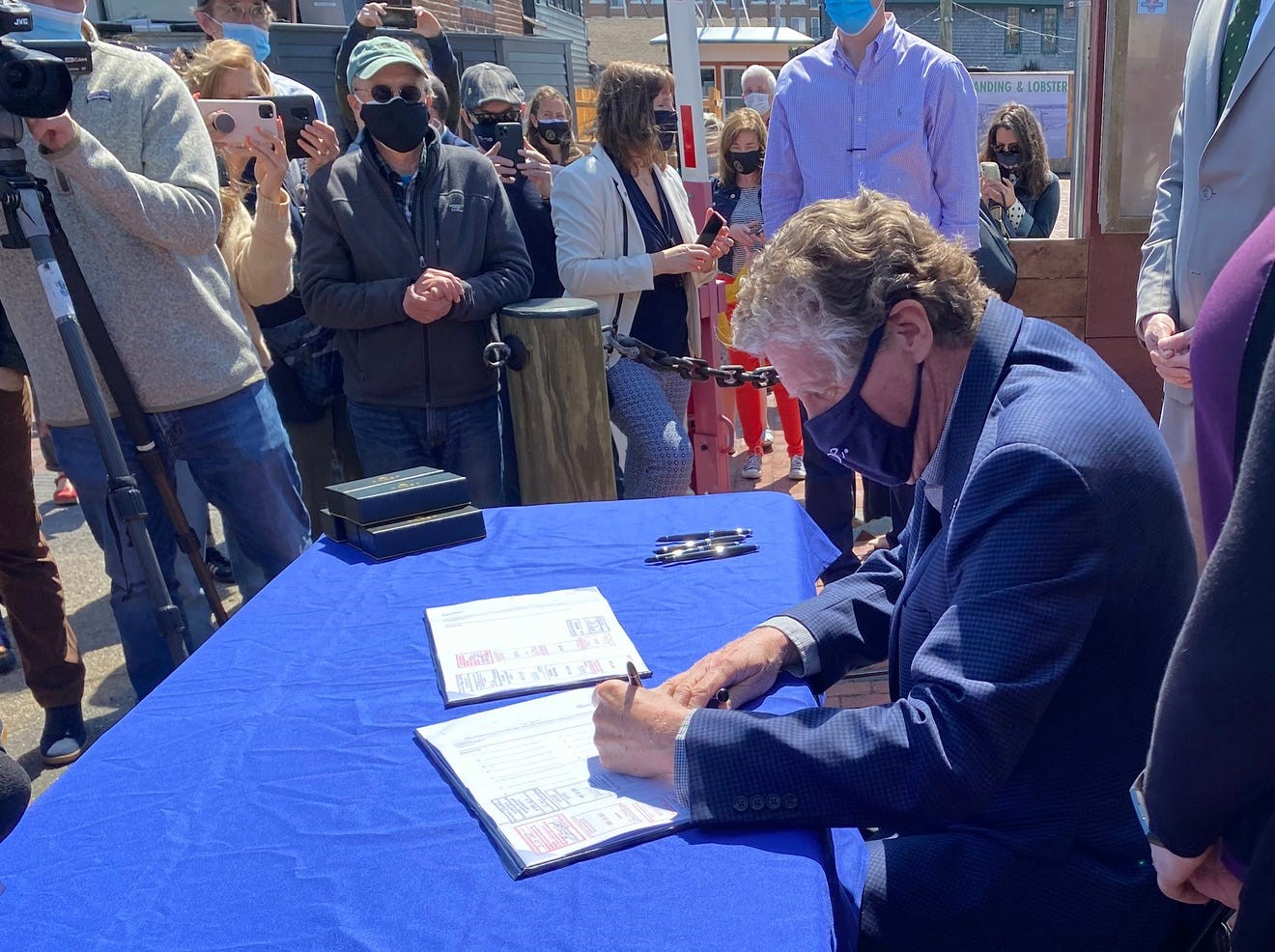

By Andrew Winslow | Wed, April 21, 21
The clean energy transition is here and is accelerating with each day. States and communities are strengthening their carbon reduction goals and taking a serious look at new clean and efficient technologies. To stabilize the climate and meet the growing number of binding carbon commitments, the world will need to reduce its dependency on fossil fuels. This is an opportunity to create new sustainable and well-paying jobs at all levels up and down the market and across sectors. But, it also has the potential to leave many who have worked in this industry for generations without work. State policy is crucial to ensure that the clean energy transition does not leave these workers behind and provides opportunities for them to transition to new clean energy jobs. Clean energy workforce development can also be used to provide support to traditionally disadvantaged groups and quality job opportunities to low income households. This month’s policy tracker blog will look at workforce development and environmental justice legislation that has been introduced or advanced in the past two months.
First, let’s highlight an existing impressive workforce program, New York’s Clean Energy Workforce Development program, administered by the New York State Energy Research and Development Authority (NYSERDA). NYSERDA has dedicated $100 million in funding to support the clean energy workforce. The money comes from the Clean Energy Fund, with guidance from the 2019 landmark Climate Leadership and Community Protection Act. The program aims to relieve burdens that affect both job seekers and potential employers. The program does so by offering internships and on-the-job training for job seekers and sets up a talent pipeline, which reduces business costs for employers who hire new workers. The program has specific career pathways for high efficiency heating, ventilation, and air conditioning (HVAC), and heat pumps. New legislation, Bill S4264A, was introduced to the New York Senate earlier in March. This bill, the Climate and Community Investment Act (CCIA), targets equity, workforce development, and resilience by setting up three programs: the Worker and Community Assurance Program, the Community Just Transition Program, and the Climate Jobs and Infrastructure Program. The CCIA estimates that it will collect $15 billion annually by charging large corporate polluters a price per ton of carbon and will create and sustain 150,000 green jobs over the next 10 years.
Two large climate bills were recently signed in Massachusetts and Rhode Island. In Massachusetts, Bill S9, An Act Creating a Next-generation Roadmap for Climate Policy in Massachusetts, was finally signed by Governor Baker after much back and forth. This bill covers a wide range of topics including establishing a carbon neutral greenhouse gas (GHG) emissions reduction target by 2050, requiring the state to promulgate a net zero energy stretch code, and requiring utilities to value carbon emissions in cost effectiveness tests. It also has some exciting implications for workforce and equity as it invests $12 million in annual funding, provided by the Department of Public Utilities, to “provide workforce training, startup opportunities and grants promoting participation in the commonwealth’s energy efficiency, clean energy, and clean heating and cooling industries.” The bill specifies a heat pump market development program to fund and offer training to expand markets for efficient heat pump technology, with specific training for workers transitioning from the heating oil industry. It addresses equity by establishing an environmental justice council and institutionalized definitions for environmental benefits, environmental burdens, environmental justice population, environmental justice principles, and neighborhoods. This is crucial as it means there will be less change and more consistent support between administrations.
Rhode Island’s climate bill, S0078/H5445, the 2021 Act on Climate, was signed 16 days after Massachusetts Bill S9. Like the new law in Massachusetts, it institutes a 2050 carbon neutral GHG emission target. This bill’s main function is to establish the Climate Change Coordinating Council and its roles and responsibilities. The council will coordinate climate action across agencies and create strategies to achieve the state’s climate goals. Equity and environmental justice are at the forefront. The council’s strategies must provide an equitable transition to a clean energy economy. The workforce plans must develop programs to train, retrain, and hire workers who are traditionally underrepresented in the workforce including minorities, women, veterans, and those with disabilities.
In the Mid-Atlantic region, Maryland introduced Bill HB70, Energy Efficiency-Net-Zero Homes-Contract Preferences, to the House. The bill was received favorably by both House and Senate and is now sitting with the governor. This bill requires the Department of Housing and Community Development to give preference to applications requesting funding for a net-zero home from the Energy Efficient Homes Construction Fund to those that plan to use the services of companies that are owned by minorities, women, and veterans. This bill promotes other state initiatives by also requiring preference be given to businesses that employ individuals trained though workforce development programs funded by the Strategic Energy Investment Fund or the Clean Energy Workforce Account.
Pennsylvania, which has been debating its inclusion in the Regional Greenhouse Gas Initiative (RGGI), introduced Bill HB989 to the House. This bill supports the state’s involvement with the regional cap-and-trade program and mandates that three-quarters of the funds generated from RGGI be distributed to a newly created Energy Transition Fund. The fund serves a broad social and economic purpose that includes providing transition assistance for workers affected by changes in energy infrastructure, as well as reducing low-income customers’ electric bills, and investing in environmental justice communities. As the second largest producer of natural gas in the country, Pennsylvania has a huge fossil fuel workforce, which makes the transitional assistance in this bill very important.
Other workforce development policies that were introduced over the past two months include:
- Massachusetts H602: An Act to Promote Energy and Economic Resilience through Clean Energy Education and Job Pathway Programs
- Rhode Island S0584: The Percentage of Income Home Energy Affordability Act
- Vermont S109: An Act Relating to the Vermonters’ Enhanced Energy Savings Act
To see the entire list of policies that NEEP is tracking, visit the Legislative Web Tracker.
*Coverphoto courtesy of https://www.greenbiz.com/article/4-reasons-clean-energy-jobs-are-key-economic-recovery


